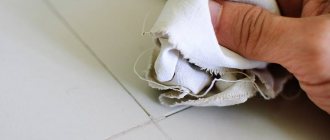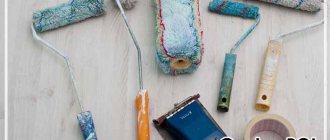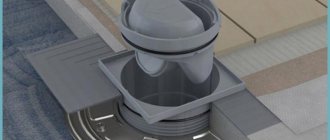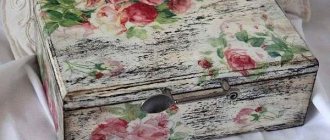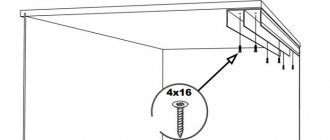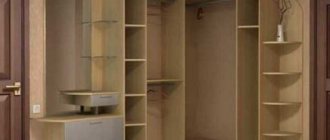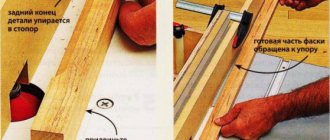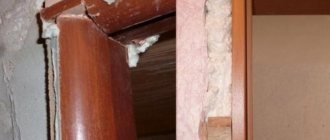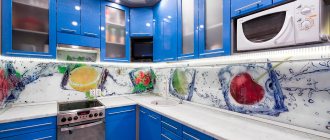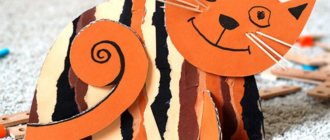Floor tiles are available in specialized stores in a variety of designs and color styles (by the way, porcelain stoneware and metlakh tiles are very popular today). It provides any room with a different level of aesthetic subtlety.
Expert opinion
Evgenia Taran
In addition to aesthetic benefits, floor tiles are also more durable than carpet, linoleum, or wood and are easier to clean. Dirt and debris that are deeply absorbed into the carpet fibers can be washed out of tile flooring relatively easily. Of course, this requires suitable tools and means.
Let's figure out how to clean the tiles on the floor from stubborn dirt.
How to clean floor ceramics
You can use a broom and dustpan to collect large debris. After this, use special products that will help achieve ideal floor cleanliness.
Some dirt cannot be removed with a broom. For example, a spilled liquid. Then a mop and a bucket of water will be your assistants. A sponge cloth is great for cleaning the surface. We described these cleaning actions in detail in the article on sanitary and epidemiological cleaning requirements.
Causes of contamination and discoloration of tile joints
Despite the improvement of building materials, thanks to which grout has acquired increased strength and moisture resistance, these qualities are lost over time.
Another detrimental fact is that cladding is often carried out in rooms with high humidity (bathroom and toilet, kitchen) or high traffic (hallway, corridor).
The most common causes of darkening are:
- Settlement and compaction of dust and small particles of dirt. They penetrate deeply into the grout structure and give light materials a dark color.
- Layering of detergent residues, fumes from cooking, soot from cigarette smoke.
- In a room with a high level of humidity, there is a high risk of developing various fungi, including mold.
- Contaminants formed during repair work can quickly ruin the appearance of even new grout.
Before you begin cleaning or lightening, you need to carefully examine the seams, determine the cause of the color change, and only then develop an action plan.
For more information about the reasons for contamination of tile joints, read the article - Causes of mold in the bathroom on tile joints and how to get rid of it
Methods for cleaning old contaminants
There are two methods for removing old stains - mechanical and chemical.
- 1) Mechanical - fighting stubborn dirt with a knife or a metal brush. You should not carry out the processing too intensively, because there is a high probability of damaging it. This cleaning method is well suited for removing old putty and cement after repairs.
- 2) Chemical – treatment of contaminants using chemical solutions.
How and with what to wash primer from porcelain tiles
If porcelain tiles are stained with a primer, and unpleasant whitish stains remain, then you can clean it with household chemicals that contain acid.
Cleaning preparations for bathrooms can be available.
If stains appear again after drying, then you need to apply a bathroom cleaner, cover with a wet cloth and let it soak for an hour, then thoroughly rub the stain with a stiff brush or washcloth, then rinse with clean water and quickly wipe the stain dry.
You can easily and quickly wash the primer from porcelain stoneware using available detergents.
The ingrained, dried primer is difficult to wipe off from porcelain stoneware; it is recommended that when repairs are carried out, the following precautions are taken:
- Cover porcelain tiles with plastic film or other protective material;
- Wipe off dirt as soon as it appears, do not allow it to soak in and dry out.
- If the tile surface is unpolished or semi-polished, special protection is required.
It is necessary to apply the preparation to the porcelain tiles, rub it over the surface with a hard sponge, and then rinse with clean water. Be careful with your ceramic tiles, and then you won’t have to wash them with all sorts of chemicals.
Related article: How to make a wardrobe on a loggia and balcony from clapboard
How to clean the floor without streaks
A few tips to help you wash your tiles without streaks:
- You need to start cleaning by cleaning the seams. To do this, apply detergent to them and leave for a few minutes. After this, go over the joints with a brush and you can start washing the floor.
- To clean the floor, use mild detergents diluted in water. Detergents are applied to a small area and washed off after a few minutes. Soak one area and begin to wash another. After this, be sure to wipe the surface with a dry cloth.
- To ensure that the relief surface looks well-groomed, do not forget about regular cleaning. For comfortable floor cleaning, be sure to purchase a good mop. Clean the floor as it gets dirty.
Manual mechanical cleaning of seams
In a situation where dirt, fungus or mold has penetrated too deeply into the structure of the grout, and cleaning agents cannot cope, we use more radical methods - we remove the entire solution or its upper layers. We pre-treat the seams with vinegar water, then take sandpaper or a scraper and gradually erase the grout until the dirt disappears. To completely remove the solution, you can also use a grinder saw or a grinder. After the seams are cleaned, we treat them with an antifungal agent, let them dry well and apply a new layer of grout with a spatula.
How to eliminate mold
Sometimes you have to clean the tiles not only from dirt, but also from any fungus that has appeared.
How to properly deal with fungal growth:
- First you need to remove large debris;
- Stir: 1 teaspoon of soda, 1 teaspoon of ammonia, 0.5 teaspoon of vinegar, 14 teaspoons of water;
- Pour the solution into a spray bottle for comfortable distribution;
- Distribute in the area where the fungus forms. If necessary, re-process;
- After this, remove excess moisture.
Note! This product will not only help get rid of fungus, but also disinfect the surface.
No. 3. Glass cleaner
If a special means for washing tiles is not always at hand, then every housewife probably has a composition for washing glass and mirrors in her arsenal. Almost every such product contains ammonia , which will help remove minor dirt from the tiles and restore it to its former shine. The cleaning method is no different from washing windows: you need to spray the composition, and then carefully treat the surface with a soft cloth.
How to clean fat
To remove grease from relief tiles, you can use a mixture of vinegar and soda. This substance will help eliminate even dried dirt, which is often observed in the kitchen. A thick mixture is made from vinegar and soda, applied and left for a while. After this, the residues are wiped with a damp cloth.
This product is perfect for textured surfaces of any color. It will refresh the tile and give it brightness.
You can use lemon for cleaning. An excellent product for removing any dirt from tiles. A significant advantage is ease of use. The stain must be wiped with a slice of fresh lemon. Even stubborn dirt will simply dissolve.
How to protect seams from dirt and mold
To avoid further contamination of tiled joints, it is necessary to regularly wash them with soapy water and also treat them with appropriate products, for example, Atlas Dolphin. Treating the seams every week with solutions based on ammonia or vinegar can protect against fungus and mold.
By following the basic rules for caring and cleaning tile floors, as well as adhering to our recommendations for using folk remedies and household chemicals, you can quickly and easily remove dirt from inter-tile joints.
Other types of pollution
You can deal with any type of dirt on tiles using the above methods. The choice of cleaning method depends on the complexity of the situation. You can wash the seams, remove brilliant green, and polyurethane foam using regular ammonia.
Recently, ceramic tiles have become especially popular because they are durable, easy to maintain and aesthetically attractive. There are a large number of different cleaning products for this floor covering, but you should approach their choice very carefully. The use of household chemicals can lead to serious health problems and skin irritations. A significant disadvantage of household chemicals is their high cost.
How to care for tiles
To prevent mold from appearing in the seams of floor tiles in the kitchen, treat the joints with silicone glue (sealant).
To clean ceramic tiles, do not use strong abrasives that can damage the surface or deprive the tile of its shine. This rule also applies to parquet and linoleum.
Aggressive detergents can clean tile floors well, but damage the grout.
To disinfect and disinfect tiles (in the bathroom, in the kitchen), it is recommended to use products containing bioenzymes.
Cleaning tile joints
Several recommendations for washing interstitial seams:
- The simplest method of washing seams is to treat them with a soda solution. To do this, you need to dilute baking soda with water until it becomes pasty. Easy to apply with an old toothbrush. Leave for 30 minutes. As a preventative measure, carry out this manipulation every time you clean your apartment.
- If the fungus has already begun to appear, you need to add vinegar to the soda mixture. This product will help fight mold and restore the tiles to their former attractiveness;
- If you want to return the seams to their former whiteness, you can use bleach. The product is applied and left for several minutes.
- Peroxide has proven itself to be excellent in the fight against fungal growths. You need to apply it on a cotton pad and go over all the seams. You can also mix peroxide with detergent. Apply to seams and leave for 60 minutes. After this, rinse the floor with clean water.
- Copper sulfate is an excellent method of fighting fungus. The product is diluted with water and poured into a spray bottle. The tile must be treated with a soap solution, and then apply liquid with copper sulfate.
- Borax is a suitable preparation for combating mold. There is no need to rinse off because it acts as a protective barrier for the flooring.
- Essential oils work well against fungus. Such as grapefruit and tea. The liquid is applied in a diluted state - 1 to 10 and washed off with water.
Special cleaners for tiles
Chemicals such as Lysol are ideal for cleaning and disinfecting floor tiles. These cleaning products are specially designed to combat floor contamination and disinfect it. After using them, it is recommended to wipe the floor with clean water.
"Sanytol"
Removing grease and other contaminants (including in the kitchen) using Sanitol:
- Spray the substance onto the contaminated area.
- Leave the resulting foam to act for 10–15 minutes.
- Wipe dry with a cloth.
- Repeat as needed, depending on how stubborn the dirt is.
After renovation
Dealing with contamination after repair is much more difficult, especially when its surface is rough.
Step-by-step cleaning of flooring after renovation:
1) First of all, it is necessary to remove traces of glue. To do this, you can use vinegar diluted with water. Apply with a soft brush. Do not use metal devices!
2) Hardened putty can be removed using a scraper.
3) You can remove traces of tape with nail polish remover.
4) A soap solution will work well with the primer. Dried marks can also be soaked and removed with a sponge.
5) You can remove cement using salt. To do this, you need to sprinkle salt on the surface and add a little water. After the product has taken effect, remove with a brush.
6) Many hardened solutions can be removed using a gel-like toilet cleaner.
7) In some cases, it may take several days for the stains to completely soak out. After this, the tiles are washed with detergent.
 Gasoline removes paint well. Then the floor is washed with soapy water.
Gasoline removes paint well. Then the floor is washed with soapy water.
Vinegar
Acetic acid effectively removes grease stains, plaque, mold and many other types of dirt. Table vinegar with a concentration of 6% is used. The most convenient way to apply it to the surface is with a spray bottle. For serious stains, leave the vinegar for half an hour to break down the stains. Additionally, problem areas can be cleaned with a soft-bristled brush. At the end of the procedure, the floor tiles should be rinsed with warm water and excess moisture removed with a microfiber cloth. When using this method, you should be careful, as frequent use of vinegar can lead to corrosion of the joints between the tiles.
How to effectively clean rough porcelain tiles
The easiest way to remove remnants of building material is from smooth tiles. If the tiles have a relief texture, then cleaning will be much more difficult.
The best option is to clean the floor covering as dirt appears. If you do find an old stain, you can deal with it using household chemicals.
A special product is applied to the dirt. After this, wipe with a soft sponge in a circular motion.
It is not recommended to use bulk detergents because they can destroy the glossy shine. To avoid streaks and white marks, we recommend giving preference to gel-like preparations. When selecting a detergent, it is necessary to take into account the material from which the tiles are made.
Steam cleaner
The device removes stains from tiles even in hard-to-reach places. Under the influence of hot steam released under pressure, contaminants are heated and dissolved. This method allows you to deal with grease stains, plaque, mold and neutralize spores and harmful bacteria. Upon completion of treatment, the surface should be cleaned with a damp sponge and then wiped dry.
Removing stains from floor tiles is not an easy job, and these methods will help you cope.
